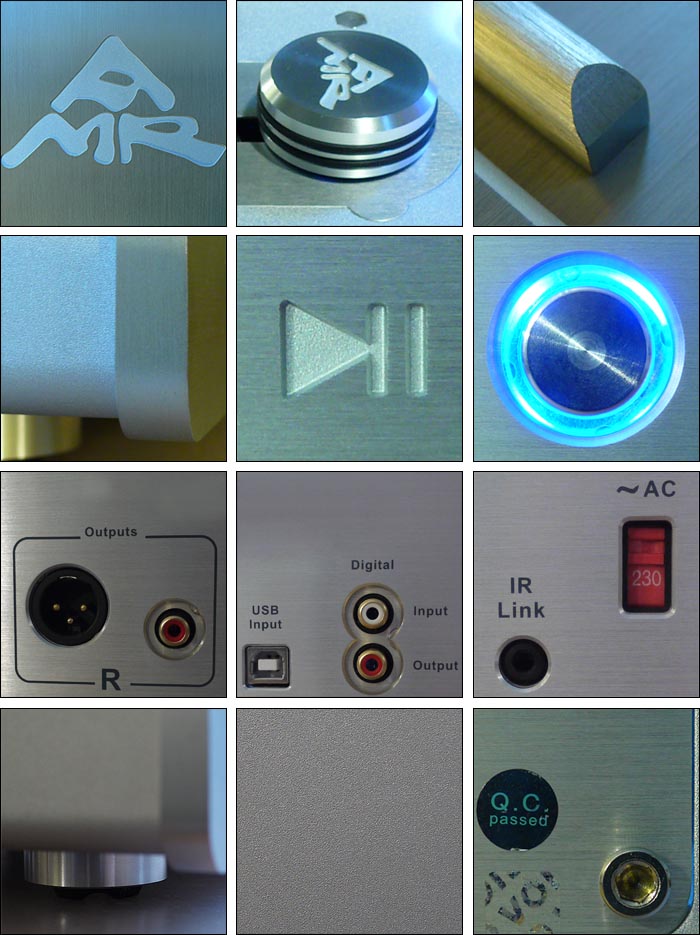This review page is supported in part by the sponsors whose ad banners are displayed below |
 |
|
The much simplified process of accessing the insides involves the mere removal of the inset back cover. Undo the four bolts for the extruded side rails and the two small screws in the center. All that leaves to undo underneath are two pairs of small screws. Those sit on the upper edge of the inner back panel. Once those four screws are removed, the entire top cover which is affixed to the front panel via mere slip grips now lifts out cleanly. So does the transport lid.
|
 |
Studying the insides reveals another difference over the CD-77. The smaller player's custom transport is hard-mounted and no longer compliantly suspended. Loading a disc no longer encounters the deliberate give which could initially be quite disconcerting. As does the CD-77 however, blue diodes once again bathe the CD well in blue light.
|
 |
|
|
|
Retained also are the 45-second power-up cycle and the earlier described filter and sampling modes (Master II is default).
|
 |
On the main circuit board, AMR stickers conceal the identity of various digital chips to protect specific circuit details. "The USB circuit's power supplies, grounds etc. are fully isolated from the rest of the circuit and only the audio data are passed via transformer isolation. The USB port is limited to the sample rates and word length supported by the DAC, i.e. 16-bit and 48kHz. The performance of the USB receiver and controller depend on implementation and firmware. AMR has chosen a USB controller capable of exceptionally low levels of jitter. We generally do not like to discuss the exact nature of our choices of integrated circuits as it matters far more how they are applied. Overall gain of the player centers on 2.1V and the different tube types which may be used will alter the output voltage by ±1dB at most."
|
 |
Signature AMR flourishes on the outside include engraved rather than silk-screened logos and control icons; light pipe illumination around the controls; and grained and sandblasted aluminum textures.
|
 |
|
|
|
A contact trigger automates TOC read-in as soon as the lid is closed. Track capture is quick.
|
 |
| |
 |
The top cover plexi strips have small decompression holes in the middle of each peep window and there are small gaps along the sides for ventilation. The deliberate avoidance of any visible fasteners on the front, sides and top caters to an elegant appearance as does the slight bevel contour of the fascia. In toto, close inspection reveals that on build quality too, Abbingdon Music Research delivers in excess of what the retail price might promise.
Our resident Aussie Edgar Kramer reported to me by email that "I was just recovering from the CES madness when it was off to Melbourne to cover a high-end product launch. Which was fortuitous because I got a chance to meet Cameron and spent some time having a listen to the AMR CD-77 and CD-777. I need to congratulate the AMR team on the superbly built and designed products – both players. The sound was impressive although I was totally unfamiliar with the system and room. It’s surprising how much performance they managed to extract from the CD-777 when compared to the CD-77. I wonder what you will hear. For me it was quite close within the context of that system (which I think is quite revealing). Ghee, I wish the CD-77 had a digital out too." As we learned, the CD-77.1 "has the option for S/PDIF in/out which is retrofittable to become a transport just like the CD-777."
|
 |
  |
 |